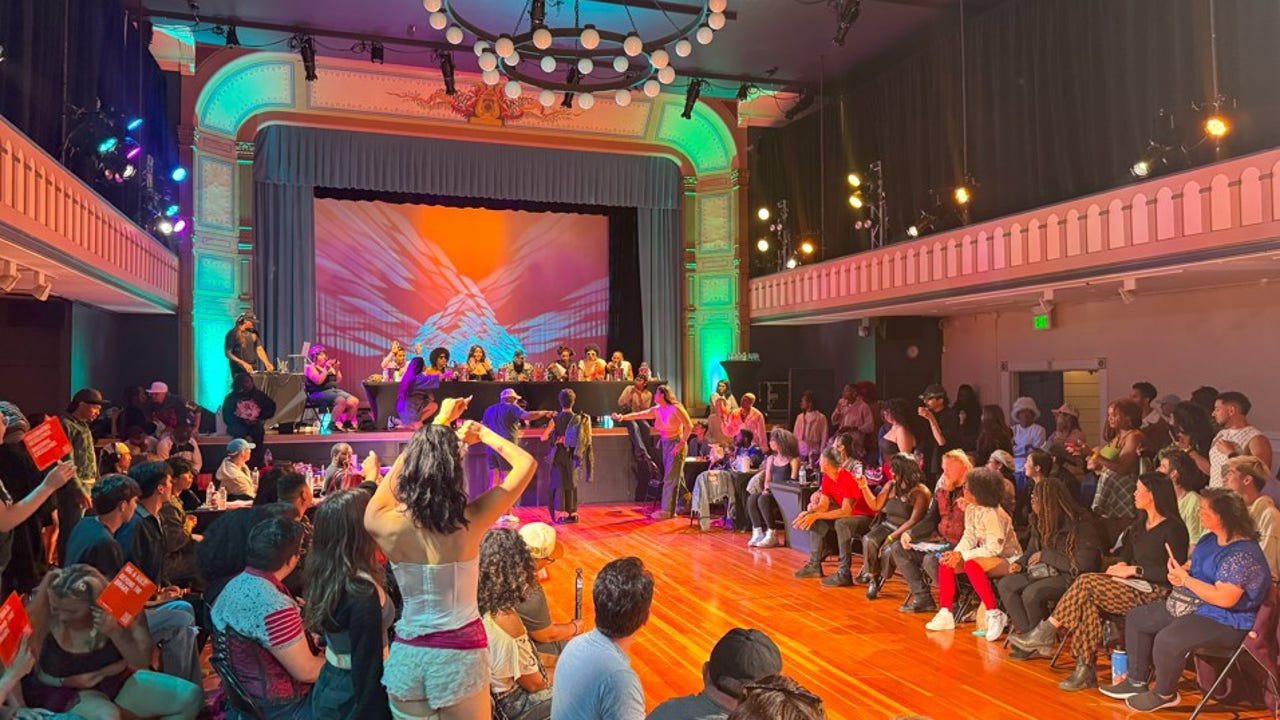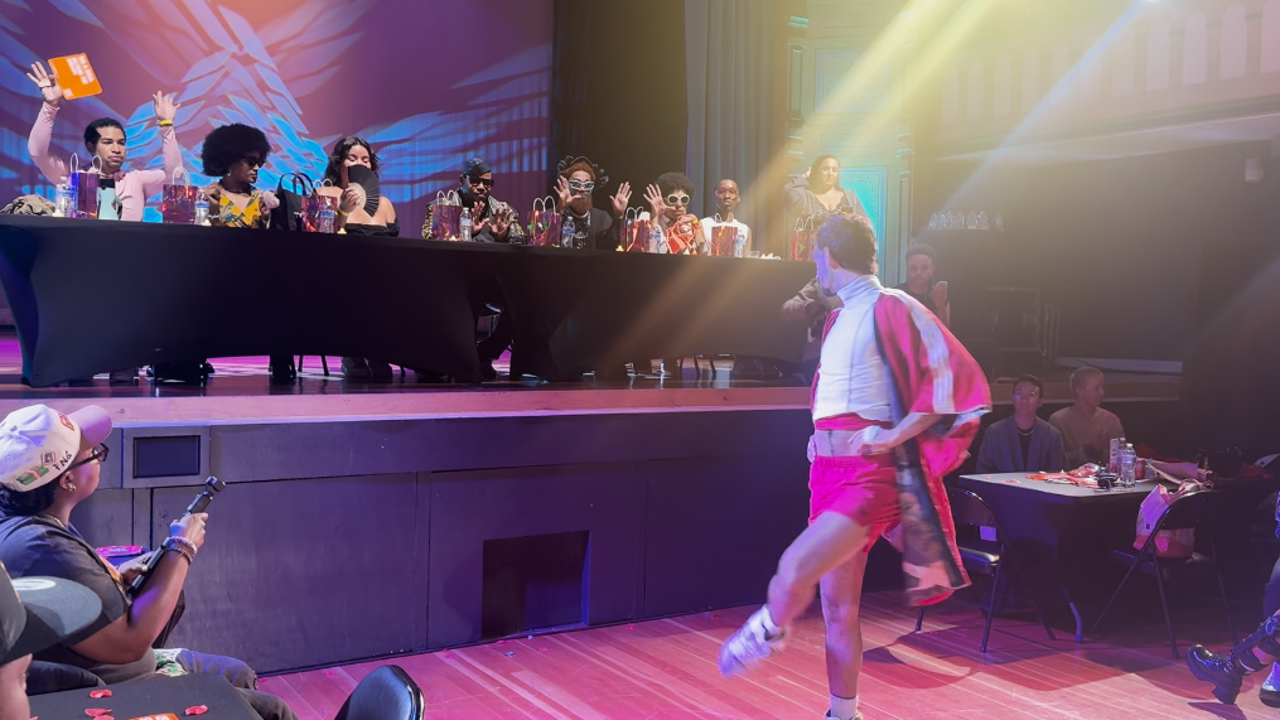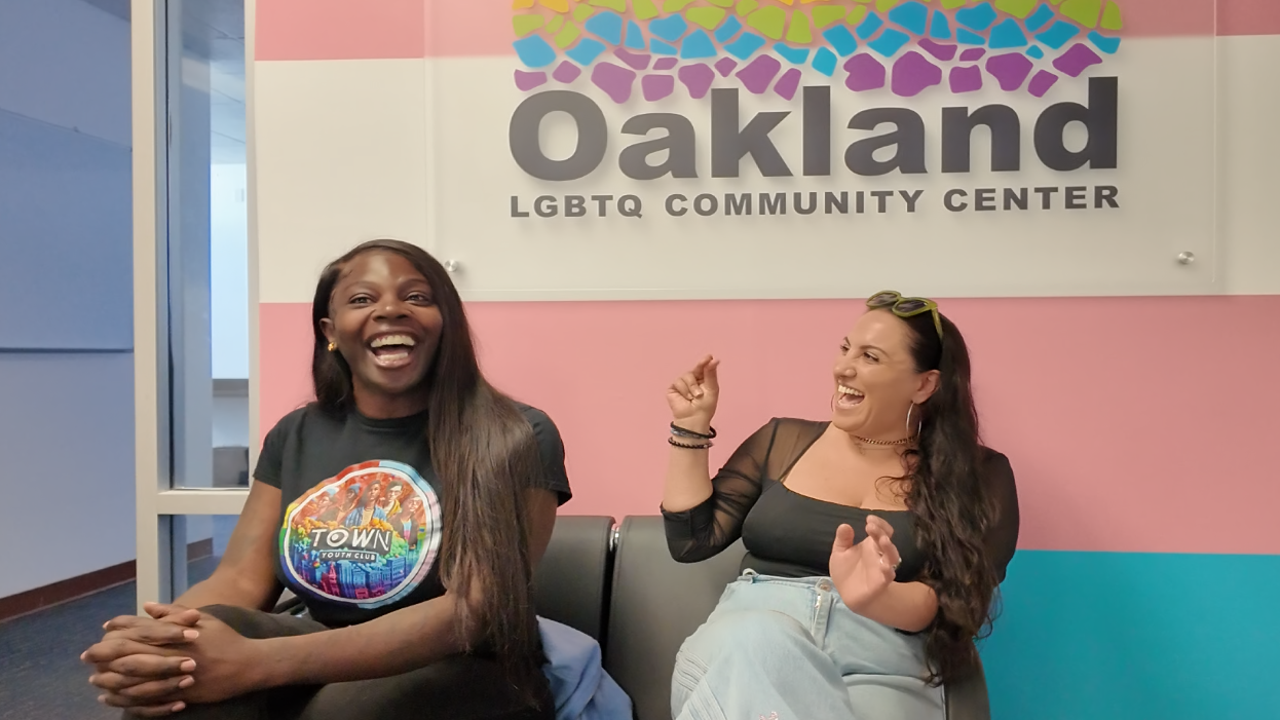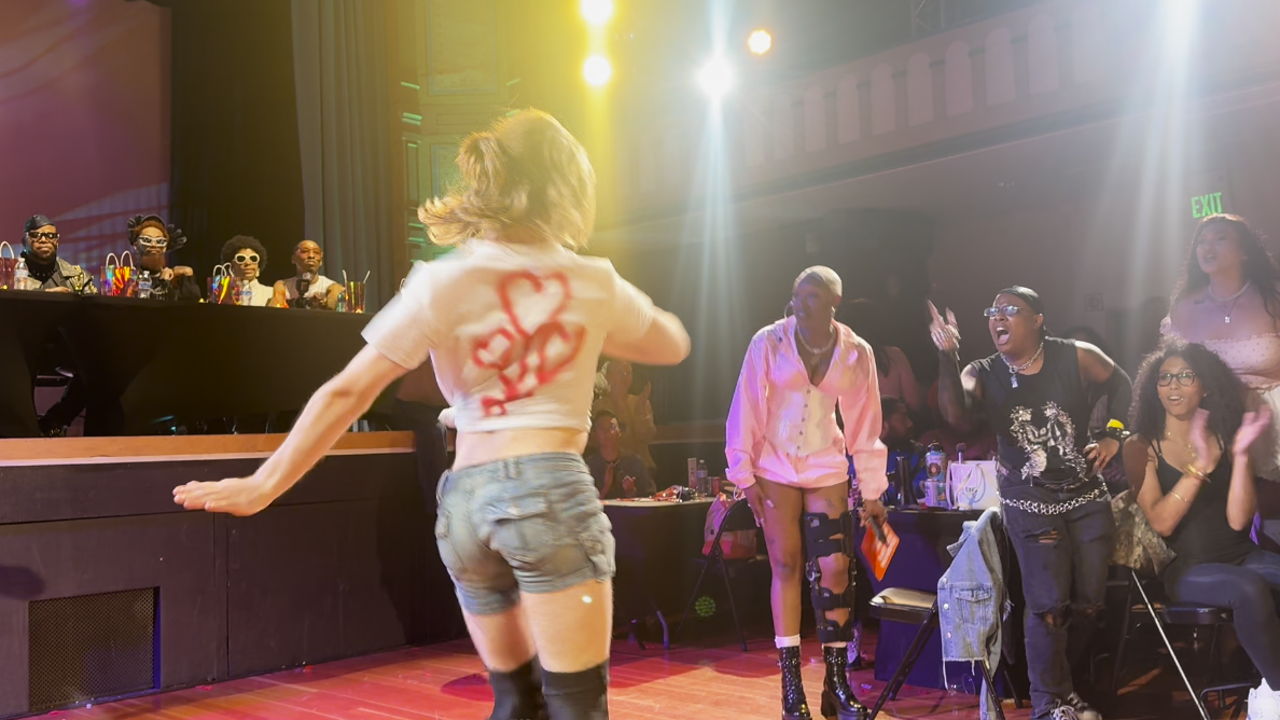Bay Area Ballroom Culture: Beyond the Glitz and Glamour

OAKLAND, Calif. - It’s easy to think ballroom culture is just about the glitz and glam of costume reveals, the dancing, voguing, trophies and cash prizes.
But the founders of the collective Oakland To All said in a recent interview that ballroom culture means so much more than what lies on the surface.
"For me, ballroom is definitely that step in the direction of accepting myself," involved ball member Lici Makaveli said. "When it comes to being trans, it takes a lot to actually jump into your transition."
Founders Shireen "Shea" Rahimi and Ashlee Banks explain it's a safe space for people who have no other place to go after being kicked out by their families after coming out as queer or transgender.
"We're not just here for your entertainment," Rahimi said. "At the end of the day, you have no idea what's going on with these kids and this, you know, the family and within the community, behind closed doors away from the balls."
The founders said the Trump administration has put a huge part of Oakland To All’s funding in jeopardy after it pulled funding from countless nonprofits.
"We were really supported in the beginning. Bridge, HIV, Oakland, LGBT center, San Francisco, AIDS Foundation, like these are the organizations that have kept us afloat," Rahimi said. "They pulled out so fast. It was a switch. A lot of those businesses were funding a lot of organizations and a lot of different things, and they really just went radio silence. It's crazy."
This is all top of mind as the collective hosts one of their biggest ball events, the 21+ Lovers To All Kiki ball happening on Thursday at 8:30 p.m. at Public Works in San Francisco.

What is ballroom?
So, what exactly is the ballroom scene among the queer community?
Picture a voguing competition mixed with a fashion show and a talent showcase and pageant.
For example, the best-dressed participants will put on their most stylish, and sometimes themed, outfits and walk against other contestants where a panel of judges hands out scores from 1 through 10. Or the judges can cut a contestant out completely.
The name originates from balls thrown by drag queens.
The judges are made up of veteran ball walkers, elder gays, house founders and much more.
Members are adopted into "houses" which are chosen families or groups where members live together and work to walk in different categories.
The categories include runway, vogue, face, best dressed, sex siren, lip sync, femme face and much more.
"You're a part of the team. You're going to come to your own, your own identity in your game, or in your performance," Banks said. "If it's you, that's how you have to show up and show out to make yourself stand out so you can win, or your team can win."
Winners get trophies with cash prizes of up to hundreds and thousands of dollars.
Unlike the name implies, there is no actual ballroom dancing.

History of ballroom
Ballroom culture has roots in slavery in the south.
Then, in the 1930s, it came to New York during the Harlem Renaissance and became a safe space for the brown and Black LGBTQ+ community.
Icon Crystal Labeija reinvented ball culture after seeing the discrimination transgender women faced during balls.
"It was a marginalized community within a marginalized community," Rahimi said.
Even within ballroom culture, transphobia, and misogyny, especially towards transgender women, remains a major issue.
Madonna’s song "Vogue" and music video first piqued pop culture’s interest in ballroom back in the 1990s.
The show "Pose" on Hulu starring MJ Rodirguez and Billy Porter also brought ballroom culture back to the mainstream after the hype died down a bit in the early 2000s.
Difference between West Coast and East Coast
It can be cutthroat and intimidating, but the West Coast scene differs from New York's in that it is less competitive and more inclusive, according to Banks.
Ballroom culture is newer to the West Coast, first hitting Los Angeles.
It came to Oakland more recently in the 2010s.
Right now in the Bay Area, there are about 10 houses including the House of Celine which started here.
Banks and Rahimi said balls are a place to discover a never-ending fountain of confidence and support that can help you tackle any life challenge outside of the balls.
Houses and members of ballroom will help you with your resume and job interview preparation to help you land your dream job.
Ballroom helps you wear a mask of confidence in real life when you need it most," Rahimi said.
The founders say if you can walk in a ball, you can tackle any life challenge.
The founders also add that for many, the prize money could be the only way some can afford their next meal.

Oakland To All’s Journey
The founders’ biggest win, though, is seeing just how much each house has grown in the Bay since resurging in the early 2010s and again in 2017.
Rahimi says anybody can walk in balls regardless of their gender identity or sexual orientation.
Even straight people can participate and walk, as long as they respect everybody else present.
"What y'all are not going to do is make these people feel like they don't belong here," Rahimi said. "We're not going to do what they did to us all these years ago."
Banks says even with the major cuts to funding, it won’t stop OTA from continuing to host balls and support the teens and young adults who come to OTA looking for refuge.
Post a Comment for "Bay Area Ballroom Culture: Beyond the Glitz and Glamour"
Post a Comment